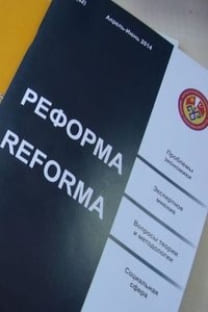ISSUES OF TWO TIER NATIONAL CURRENCY SYSTEM INTRODUCTION
world currency reserve system, gold standard, dollarization, gold national currency, gold som. world reserve system
ISSUES OF TWO TIER NATIONAL CURRENCY SYSTEM INTRODUCTION
world currency reserve system, gold standard, dollarization, gold national currency, gold som. world reserve system,
___
- Hannoun, H. (2012). «Monetary Policy in the Crisis: Testing the Limits of Monetary Policy». Speech at 47th SEACEN Governors’ Conference Seoul, Korea, 13-14 February, 2012.
- Borio, C. and Disyatat, P. (2010). «Unconventional Monetary Policies: AnAppraisal». The Manchester School, 78(s1), рр. 53-89.
- Pattipeilohy, Chr., Willem, Jan van den End, Tabbae, M., Frost, J. & Haan, J. (2013). «Unconventional Monetary Policy of the ECB During the Financial Crises: An Assessment and New Evidence». DNB Working Papers, 381, Netherlands Central Bank, Research Department.
- Eichengreen, B. (2012). «Implications of the Euro’s Crisis for International Monetary Reform». Journal of Policy Modeling, No. 34, pp. 541-548.
- Nathan, K. Lewis, G. (2013). «The MonetaryPolaris». New Berlin, New York, Canyon Maple Publ., 292 p.
- Ишханов, А.В. (2014). «В поисках нового мирового валютного стандарта». Вестник Волгоградского государственного университета, № 5 (28).
- Абдыбалы, тегин С. (2016). «Экономикада акча сунушун турукташтыруу маселелери». Реформа, 1(69), c. 27-39.
- Абдыбалы, тегин С. (2019). «Акчанын чыныгы табияты». Бишкек, бб. 86-89.
- Хоботов, С.Н., Долгонос, И.Н. (2021). «Проблема расчета и инструменты снижения долларизации в государствах-членах ЕАЭС». Вестник Омского университета. Серия «Экономика». Т. 19, № 1.
- http://www.eurasiancommission.org/ru/act/integr_i_makroec/dep_stat/tradestat
- Catao, L., Solomou, S. (2003). «Exchange Rates in the Periphery and International Adjustment Under the Gold Standard». IMF Working Paper, WP/03/41.
- http://www.alsosprachanalyst.com
- https://www.core-econ.org/doing-economics/book/text/10-04.html
- https://goldomania.ru/menu_003_002.html
- ISSN: 1694-5158
- Yayın Aralığı: Yılda 2 Sayı
- Başlangıç: 1999
- Yayıncı: Kırgızistan Türkiye Manas Üniversitesi
THE POTENTIAL OF RURAL AREAS AND LOCAL GOVERNMENTS IN ISSYK-KOL REGION
ISO 9001:2015 QUALITY MANAGEMENT SYSTEM IN CREDIT GUARANTEE FUNDS
Malik-aidar ABAKIROV, Gulbaira NARMATOVA, Abdil TASHYROV, Syrgak ABAKIROV
EFFICIENCY OF THE VISA FREE REGIME FOR THE DEVELOPMENT OF TOURISM
Bakyt TURDUMAMBETOV, Altynai TAALAIBEK KYZY
TOURIST TERMINOLOGY: SOME DISCUSSIONS AND DISPUTES
İKİZ AÇIK HİPOTEZİ: KIRGIZİSTAN EKONOMİSİ ÜZERİNE AMPİRİK BİR ÇALIŞMA
İbrahim Halil SUGÖZÜ, Uulbolsun NURKAMILOVA
DEVELOPING THE ECONOMIC POTENTIAL OF RURAL AREAS
Dzhumabek DZHAILOV, Nazira ABDYLDAEVA
